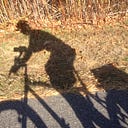Springsteen’s ‘Letter to You’ Muses On What’s Promised in the Promised Land
Bruce Springsteen had hoped to celebrate his reunion with the E Street Band by launching a world tour.
Then Covid-19 showed up, like darkness on the edge of town, and a Zoom tour just wouldn’t have been the same. Therefore, since the band had already cut an album of new songs, titled Letter to You, Springsteen is releasing it on Friday and promoting it through a variety of socially distanced platforms.
That includes a movie-length documentary, also titled Letter to You, that becomes available Friday on Apple Plus.
Long-time Springsteen videographer Thom Zimny filmed it in Springsteen’s barn-like studio over the several days last November when the new album was recorded.
The concept echoes Zimny’s accompanying film for Springsteen’s last record, the non-E Street Western Stars. The E Street connection should make this one more enticing to veteran Springsteen fans.
On a foundational level, that’s exactly what the Letter to You film aims to be: an affirmation of old friendships and the ties that bind.
Springsteen repeatedly underscores that message, rhapsodizing about the joy of being in a band and making music that becomes a conversation with an audience.
But the documentary, like the record, isn’t just about reassembling the old gang for one more cruise down Highway 9.
It’s about how Springsteen is seeing the world as the old gang gets older.
He’s clearly given it a lot of thought, spurred in part by the deaths of his early bandmate George Theiss and E Streeters Danny Federici and Clarence Clemons. Letter to You, album and film, are laced with ruminations about the finite nature of our tour on Earth and what might await once the last note fades.
You could call it a continuation of Springsteen’s Broadway show and the autobiography in which that show was rooted. As always with Springsteen’s writings, it’s well-crafted, and Zimny’s pensive winter imagery provides a striking visual complement.
In fact, Zimny’s drone may be the second most important player here, behind only Bruce himself. We see so many black-and-white overhead shots of stark snowy woodland that it feels like a bleak Scandinavian noir crime drama could break out at any moment.
That aura synchs perfectly with the winter wear in which the band is dressed, not to mention the Letter to You cover photo in which Springsteen looks like the grizzled world-weary detective in one of those dark Nordic dramas.
The photo presents a stark contrast to the young Springsteen, a fact underscored because both the record and film feature songs he wrote almost 50 years ago.
A vintage track we see in performance here, “Song for Orphans,” is Dylanesque, crammed with words the way Bruce fans like to cram stadiums. The new songs are more economical, though it must be said that “Orphans” stands with any of them.
Letter to You the documentary includes performances of several full songs from the new record, which serves the immediate promotional purpose. But in the wider sense, Letter to You also reminds us that Springsteen, along with his manager and pal Jon Landau, has always understood the importance of the Hamilton question: who tells your story.
The best answer: Tell your own.
This documentary, like Springsteen’s book, his Broadway show, his interviews and his songs, add up to a consistent portrait of a superb artist and an admirable man.
There’s no reason to doubt the truth of that picture. It just occasionally can gloss over some nuances, and what’s unavoidable here is his relationship with the E Street Band, because that relationship is placed so squarely in the center of the film.
It’s portrayed here as it has been in the past: that Bruce and the band are blood brothers, fused through music.
That’s also doubtless true. It just may not be the whole truth.
Springsteen has always noted, correctly, that a band cannot be a democracy. It needs a ruler. That’s underscored in a scene here where several band members talk about whether a song needs a pause. Springsteen listens to them for a while and finally says, matter of factly, that if he wants a pause, he will let them know. That’s that.
Since 1988, Springsteen has used the E Street Band on and off. That doesn’t mean there’s no affection or bonding. It does suggest that on one level they remain employees, called in on an as-needed basis.
It’s further worth noting that Springsteen and the E Street Band were inducted separately into the Rock and Roll Hall of Fame. That also doesn’t mean they aren’t a band when they’re together. It still feels like, well, a nuance.
And a discussion for historians tomorrow. For today, fans get Letter to You.
